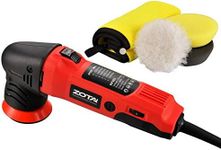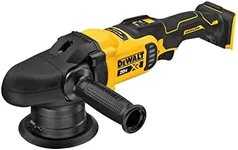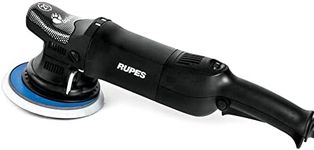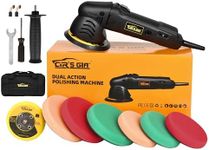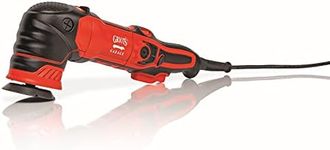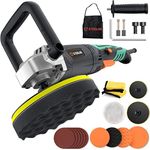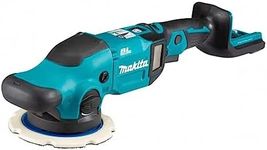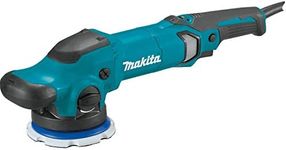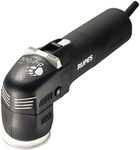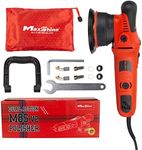Buying Guide for the Best Dual Action Polishers
Choosing the right dual-action polisher can make a big difference in how easy and effective your car detailing or polishing projects are. Dual-action polishers are popular because they are safer for beginners and reduce the risk of damaging paint compared to rotary polishers. When picking a polisher, it's important to understand the main features and how they relate to your needs, such as the size of the area you'll be working on, your experience level, and the types of tasks you want to accomplish (like removing scratches, applying wax, or finishing). By focusing on the key specifications, you can find a polisher that matches your comfort level and the results you want to achieve.Orbit Size (Throw)Orbit size, sometimes called 'throw,' refers to how far the pad moves from its center as it oscillates. This is important because a larger orbit covers more area and can correct paint faster, but it can also be harder to control, especially for beginners. Orbit sizes typically range from about 8mm to 21mm. Smaller orbits (8-12mm) are great for precise work and are easier to handle, making them ideal for beginners or for working on smaller or more intricate areas. Medium orbits (12-15mm) offer a balance between control and efficiency, suitable for most users. Larger orbits (15-21mm) are best for quickly covering large, flat surfaces but may be too aggressive for delicate work or tight spaces. Choose the orbit size based on your comfort level and the types of surfaces you'll be working on most often.
Pad SizePad size refers to the diameter of the polishing pad that attaches to the polisher. This matters because larger pads cover more area and speed up the process on big, flat panels, while smaller pads are better for detailed work and getting into tight spots. Common pad sizes are 3-inch, 5-inch, and 6-inch. If you mostly work on large surfaces like car hoods or doors, a 5- or 6-inch pad is efficient. For bumpers, mirrors, or intricate areas, a 3-inch pad gives you more control. Consider what kind of jobs you'll do most often to pick the right pad size.
Speed Settings (OPM - Orbits Per Minute)Speed settings, measured in orbits per minute (OPM), determine how fast the pad moves. This is important because different tasks require different speeds: higher speeds are good for heavy correction and removing defects, while lower speeds are better for applying wax or finishing. Most dual-action polishers offer variable speed controls, usually ranging from about 2,000 to 6,800 OPM. If you want versatility, look for a polisher with a wide range of speed settings. Think about whether you'll need to do both heavy correction and gentle finishing, and choose a model that lets you adjust the speed accordingly.
Power (Motor Wattage)The power of the polisher, often measured in watts, affects how well it can maintain speed and performance under pressure. More powerful motors can handle tougher jobs and won't bog down as easily when you press harder, but they can also be heavier and more tiring to use. Typical polishers range from about 500 to 1000 watts. If you plan to do a lot of correction work or use the polisher frequently, a higher wattage can be helpful. For occasional use or lighter tasks, a lower wattage is usually sufficient and may be easier to handle.
Ergonomics and WeightErgonomics and weight refer to how comfortable the polisher is to hold and use for extended periods. This is important because a heavy or awkwardly shaped tool can cause fatigue, especially during long polishing sessions. Lighter polishers are easier to maneuver, but sometimes heavier models offer more stability. Look for features like comfortable grips, balanced weight distribution, and easy-to-reach controls. If you have smaller hands or expect to use the polisher for long periods, prioritize comfort and manageability.
Noise and VibrationNoise and vibration levels affect how pleasant the polisher is to use. High noise can be annoying, and excessive vibration can cause discomfort or fatigue. Some polishers are designed with features to reduce both. If you are sensitive to noise or plan to use the polisher for long periods, look for models that are known for being quieter and smoother. Reading user reviews or trying out a polisher in person can help you judge this aspect.
